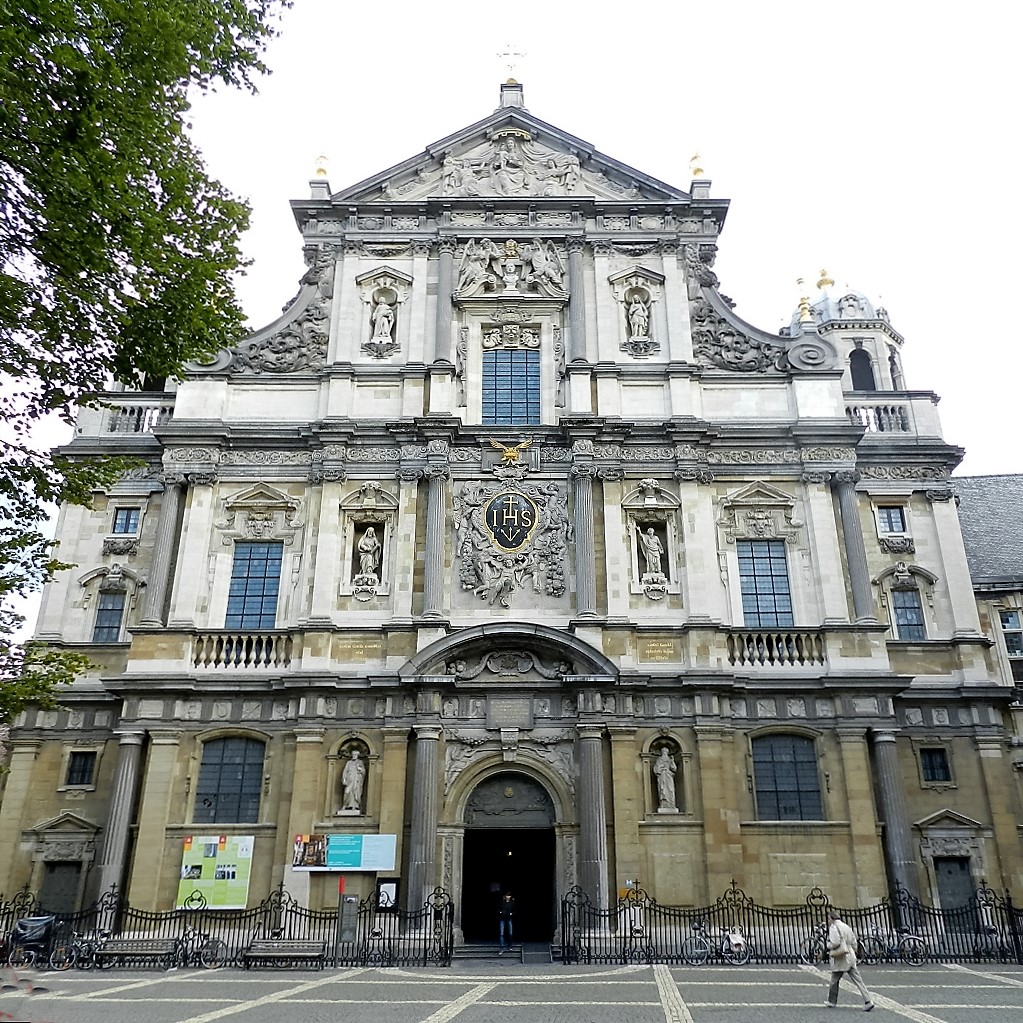The Antwerp jesuit church, a revelation.
When leaving
The enclosed porch
When leaving the church through the enclosed porchSpace which, usually on the inside, has been added against the outside door to prevent a continuous draught in the building when the outside door is open. (Jan Pieter I Van Baurscheit, 1721) you will see a couple of life size ladies showing two of the most important virtues: on the left confident faith (cross) and on the right firm hope (anchor, of which the barb has broken off). From a distance, a third virtue can be seen in between them, on top of the porch: love, symbolized by a mother treating her little children lovingly. Together they represent the three divine virtues. The way they have been positioned corresponds completely with the verse in the Bible: “So faith, hope, love remain, these three; but the greatest of these is love.” (1 Cor. 13:13). Since in our culture we read from left to right, faith, left, is in the first position. Hope follows in the second one. The “greatest” of the three divine virtues holds the most important position, enthroned between them.
In the Baroque period, the three divine virtues were mostly depicted on an altarThe altar is the central piece of furniture used in the Eucharist. Originally, an altar used to be a sacrificial table. This fits in with the theological view that Jesus sacrificed himself, through his death on the cross, to redeem mankind, as symbolically depicted in the painting “The Adoration of the Lamb” by the Van Eyck brothers. In modern times the altar is often described as “the table of the Lord”. Here the altar refers to the table at which Jesus and his disciples were seated at the institution of the Eucharist during the Last Supper. Just as Jesus and his disciples did then, the priest and the faithful gather around this table with bread and wine., at which Jesus’ sacrifice of love was celebrated. Why then, are they on the enclosed porch here, and only visible when going out? Could it be inspired by an anecdote from Ignatius’ life? At his departure from Barcelona to Rome (ca. 20-3-1523) someone reproached him that it was not wise to go on a pilgrimage to the Holy Land without knowing the languages and without a companion. Ignatius, who wanted to depend only on God and did not take any money with him either, answered that “the only things he wanted to own were the three divine virtues: faith, hope and love.” This is an enduring message for all those who provide themselves only with material luggage on their voyage through life…
Even if this were the only contribution of art-loving Jesuits of olden times to the social graces of present day visitors, the aim of this exuberant church may be called successful: to help people think and choose ‘to the greater glory of God’.
Once you are outside again in Hendrik Conscienceplein, you might be glad to look once again at the magnificent façade or… on a cosy outdoor café. But notice the heavy iron railing (1873) that must protect the artistic façade… Incidentally the bars are decorated with little crosses, alternating with little hearts and anchors. Once again, the three divine virtues! Out of the abundance of the heart… also religious art speaketh…

